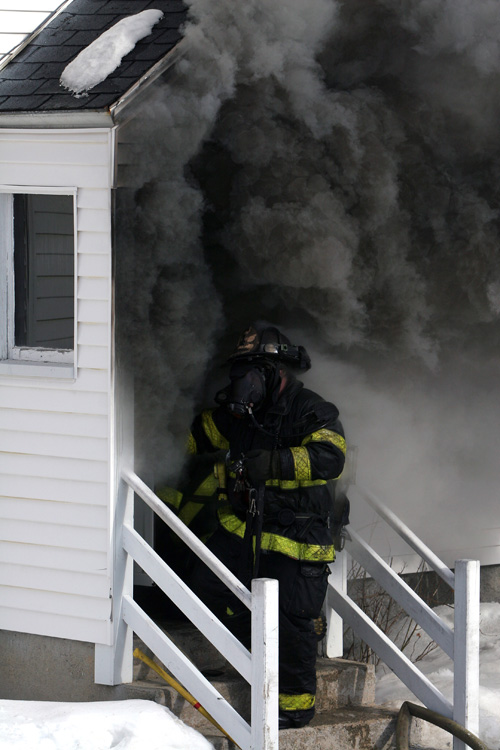Reading the Fire 4
Monday, February 23rd, 2009Application of the B-SAHF (Building, Smoke, Air Track, Heat, & Flame) organizing scheme for critical fire behavior indicators to photographs or video of structure fires provides an excellent opportunity to develop your knowledge of fire behavior and skill in reading the fire. While video provides the opportunity to observe fire behavior indicators over time, still photos also an excellent tool for practice your skill in reading the fire.
Smoke Showing Photography
This Reading the Fire exercise is based on a photo taken by Scott LaPrade, a firefighter assigned to Ladder 1 in Leominster, Massachusetts. Scott has been photographing fires around New England for 25 years. His website, Smoke Showing Photography is an excellent resource when looking for fire photos to practice reading the fire.
Apartment Fire
On February 6, 2009, the Leominster Fire Department received a call for smoke in the building at 77 Cedar Street. Ladder 1 was first due and reported smoke showing from a three-story wood frame apartment building originally built in the 1900s.
Initially light smoke was showing from the roof, but then appeared to dissipate. After companies made entry to investigate, the fire progressed rapidly.
Download and print the B-SAHF Worksheet. Consider the information provided above and examine the following photo. First, describe what you observe in terms of the Building, Smoke, Air Track, Heat, and Flame Indicators. Second, answer the following six questions:
- What stage(s) may the fire be in (incipient, growth, fully developed, or decay)?
- What burning regime is the fire likely to be in (fuel or ventilation controlled)?
- What conditions would you expect to find inside the doorway in the photo?
- What hazards does the firefighter in does the firefighter in the photo face while working in the doorway?
- How could these hazards be mitigated?
- If the fire is on Floor 1 (it was), what are likely avenues for extension in this type of building construction?

Note the kink in the 1-3/4″ (45 mm) hoseline behind the firefighter. Kinks can dramatically reduce flow rate. Watch your hoseline as well as the B-SAHF indicators!
Visit Scott’s website Smoke Showing Photography for additional photos of this incident and extend your practice in Reading the Fire.

Ed Hartin, MS, EFO, MIFireE, CFO


